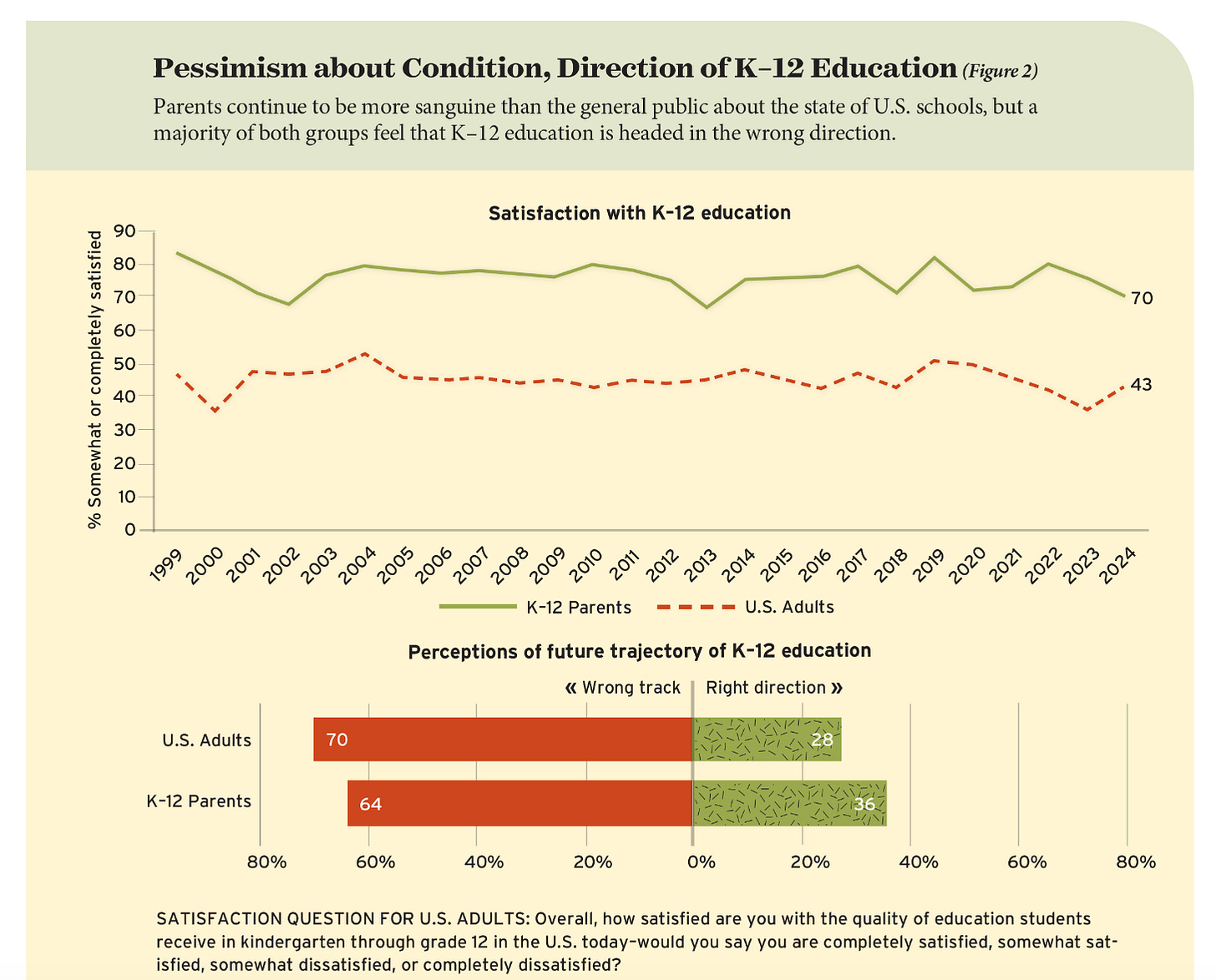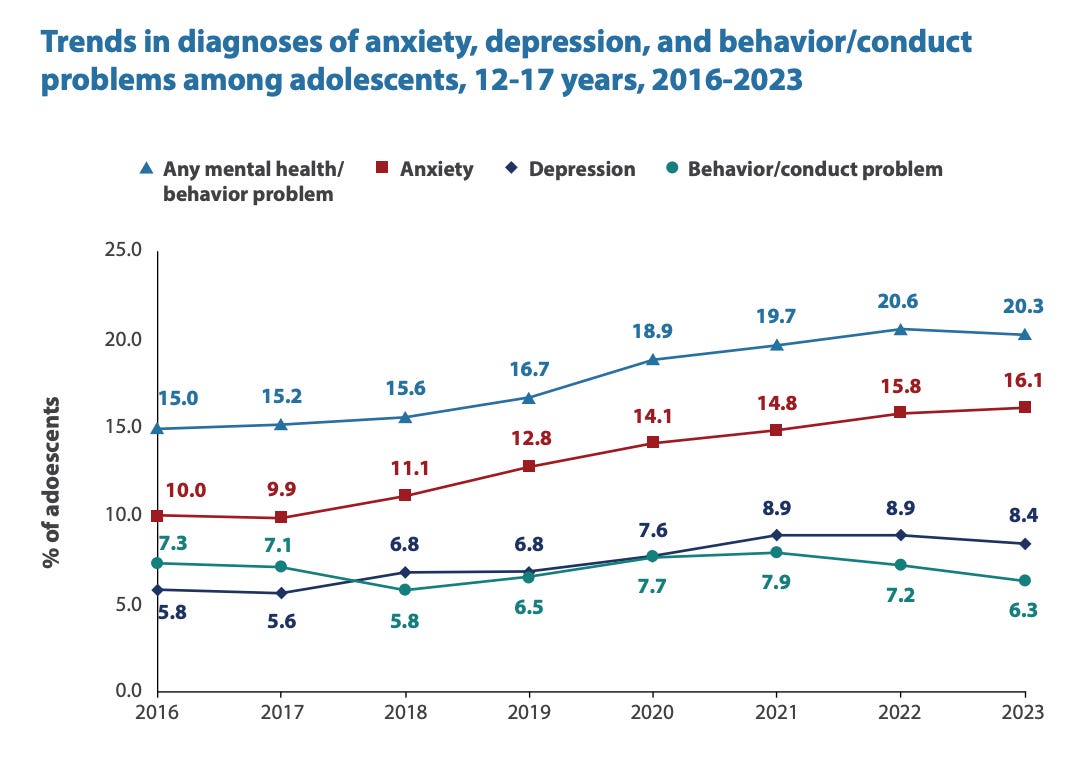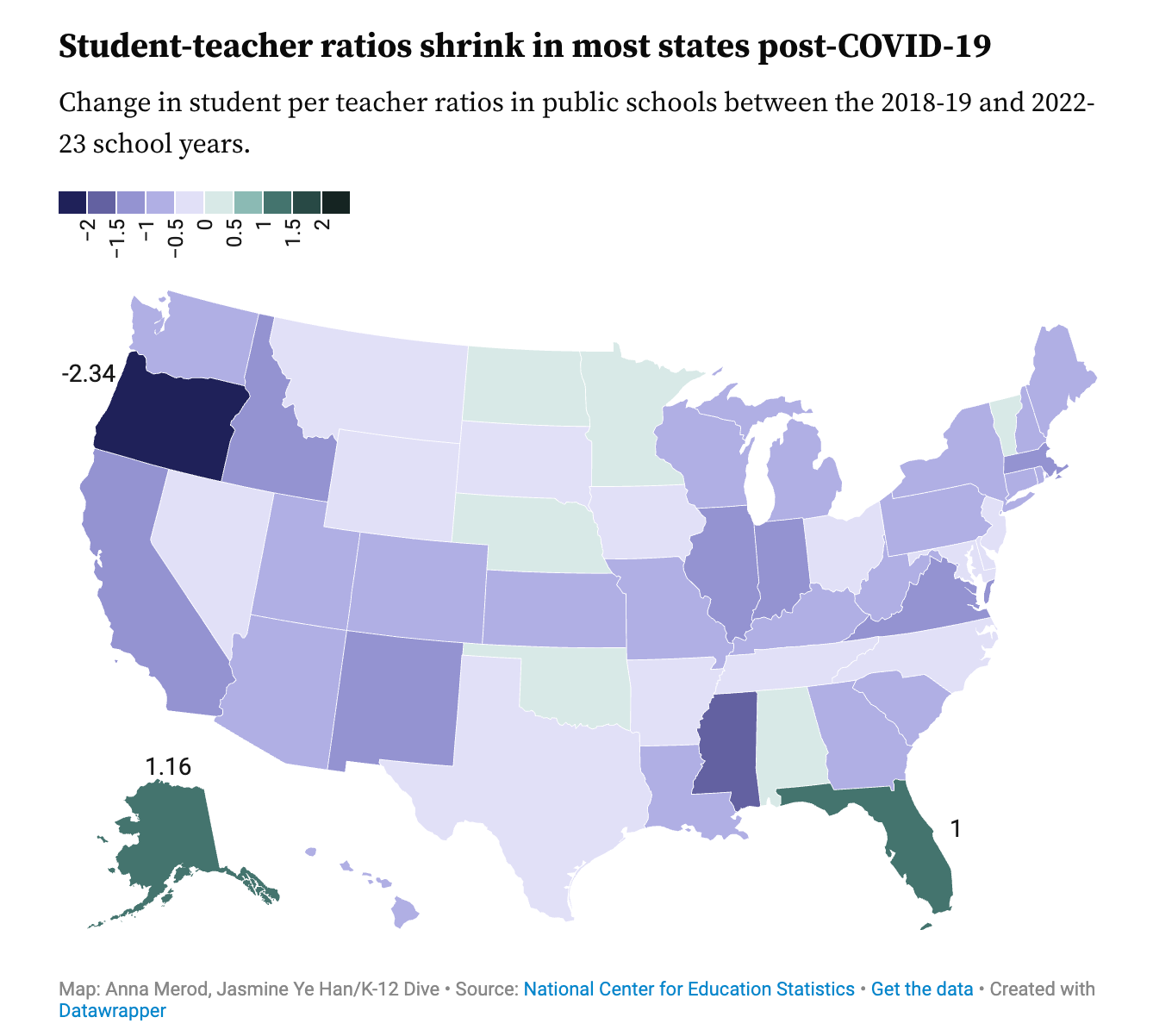Notes from the Evidence Project | Nov 20

November 20, 2024
Welcome to this edition of the Evidence Project Newsletter! We adjusted our cadence last week to account for Thanksgiving next week. We wish you and yours a restful, joyful holiday.
This issue includes:
Updates on US perceptions of schooling and academic recovery efforts
New data on student mental health and well-being
Discussion of localized staffing shortages
Critical developments in math research and policy in our Math Corner
ACADEMIC RECOVERY EFFORTS
George Mason University’s David Houston penned an excellent review of public opinion surveys on education over the last year. Across surveys, most Americans advocate for a focus on fundamentals in schools (i.e., reading, math, science, recruiting and retaining good teachers) as opposed to issues that received outsized media coverage (i.e., race, sexuality and gender identity, school choice) and are mostly unaware and untroubled by the current spike in absenteeism. Few surveys even asked about pandemic learning loss; concerns about this have largely faded from the national policy agenda. (Disclaimer: Newsletter co-writer Dan Silver is on the team that administers the education module of the Understanding American Study, one of the surveys featured in the article.)

The Year in Public Opinion on U.S. K–12 Education Policy (Education Next)
Although it may be fading from the forefront of most Americans’ minds, learning recovery efforts are still very much underway in states and districts. Arizona continues offering some of its students a free tutoring program, and one northern California district detracked ninth-grade math to generally positive results. Nationally, the proportion of afterschool programs with an academic focus has shrunk, with schools mostly citing inadequate funding or staffing as drivers of the changes. The U.S. Government Accountability Office found it challenging to determine the effectiveness of federal pandemic aid since districts had such varied priorities upon reopening. School funding experts reviewed state spending and found that strong state-level leadership facilitated recovery, while entrenched inequities and over-referring students for special education hindered it.
Further reading:
A new working paper documents how North Carolina districts made sense of the pandemic as it unfolded.
This article from the Center for American Progress highlights some state-level innovations in early childhood education facilitated by federal pandemic aid to argue for continued support for the sector.
According to new data from the National Student Clearinghouse Research Center, postsecondary undergraduate enrollment grew by 3% compared to last year, even as new freshman enrollment shrank by 5%. The growth was driven by students reengaging with college and high school dual-enrollees, whereas the decline may have stemmed from a buggy FAFSA rollout last year.
MENTAL HEALTH AND WELL-BEING

National Survey of Children’s Health Adolescent Mental and Behavioral Health, 2023 Data Brief (HRSA)
Newly released federal data collected in 2023 showed that 20% of adolescents had a diagnosed mental health condition, a statistic that has been steadily increasing from 15% in 2016 when measurement began. The proportion of adolescents who need mental health treatment but have difficulty getting it has also risen steadily over that period, from 45% to 61%. Social media has emerged as a leading culprit for these mental health declines, and schools have worked to restrict students’ smartphone access to curb their time on social media. Officials in Spokane are pleased with the early effects of a cell phone ban on student engagement, and the state of Oregon is now encouraging all schools to implement such a ban. Although cell phone bans are rising in popularity, they are nearly always implemented at the local level rather than the state. A new article from UNICEF summarizes its efforts to bolster children’s and teens’ mental health internationally.
Further reading:
New York parents have brought a lawsuit against New York City Public Schools, alleging that by not properly supporting students’ mental health needs, schools are contributing to students’ school avoidance and absenteeism.
A new working paper discusses applying machine learning methods to early warning systems to curb chronic absenteeism.
Educational game company Kahoot surveyed about 1,000 student users and found that nearly 90% say their mental health has negatively impacted their ability to study or complete work. Over a third report this as a near-daily occurrence.
Covid-19 vaccine hesitancy may have increased the popularity of anti-vaxxing more generally: rates of routine vaccination among kindergarteners are lower than pre-pandemic, and vaccine exemptions have hit an all-time high, increasing the risk of preventable disease outbreaks.
STAFFING SHORTAGES

Majority of states see decrease in student-teacher ratios post-COVID (K-12 Dive)
Evidence continues to suggest that staffing shortages are mostly local—in fact, overall student-teacher ratios decreased in more than 40 states between 2019 and 2023, according to an analysis from K-12 Dive. New federal data shows that two-thirds of public schools had a shortage of special education teachers entering the 2024-2025 school year, compared to fewer than half of schools experiencing such shortages in core subjects like math and English. Areas with high proportions of students of color also have difficulties recruiting and retaining teachers of color: about 29% of early-career Los Angeles Black and Latino teachers plan to leave the classroom within five years, and turnover is higher among non-white teachers in Philadelphia than among white teachers.
Further reading:
A new peer-reviewed article found that teachers with more absent students have lower job satisfaction.
A survey experiment showed that teachers are willing to accept a lower salary to work in a school with greater support. Among the most cost-effective supports was having a school nurse, which teachers value approximately three times the actual cost per teacher of a nurse’s salary.
THE MATH CORNER
The Council of Chief State School Officers released a report that documents six actions state leaders can take to improve students’ math outcomes, including incentivizing the adoption of high-quality instructional materials and supporting districts to align supplemental and core instruction. New peer-reviewed evidence suggests that teachers explain student success or failure in math differently depending on student race and gender. A new NSF-funded study is porting the “language of algebra” to early elementary math education, building algebraic thinking from the start of students’ math education. Results are expected in 2027.
Thanks for reading! As always, if you have feedback or want to alert us to new research, please drop us a note.
Sincerely,
The Evidence Project Team and Newsletter Co-Writers
Lisa Chu, Center on Reinventing Public Education
Dan Silver, University of Southern California Center for Applied Research in Education
Was this email forwarded to you?




Copyright © 2024 Center on Reinventing Public Education, All rights reserved.
Want to change how you receive these emails?
You can update your preferences or unsubscribe from this list.

